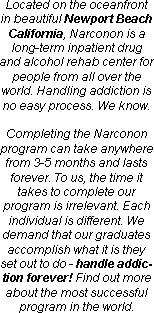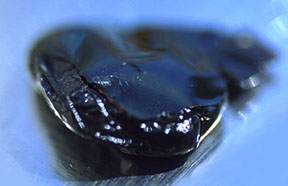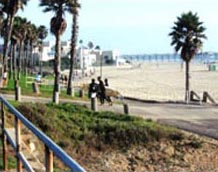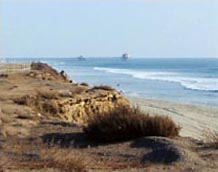
|
Navigate |
| Home |
| Kirstie Alley |
| Our 30th Anniversary |
| Never Turning Back |
| Narconon Endorsements |
| |
|
|
| |
|
|
| |
|
Facts About Drugs |
| FAQ About Ambien |
| FAQ About Ativan |
| FAQ About Cocaine |
| FAQ About Codeine |
| FAQ About Crack |
| FAQ About Darvocet |
| FAQ About Dexedrine |
| FAQ About Demerol |
| FAQ About Dilaudid |
| FAQ About Ecstasy |
| FAQ About GHB |
| FAQ About Heroin |
| FAQ About Hydrocodone |
| FAQ About Ketamine |
| FAQ About Lortab |
| FAQ About LSD |
| FAQ About Marijuana |
| FAQ About Morphine |
| FAQ About Meth |
| FAQ About Methadone |
| FAQ About Opiates |
| FAQ About Opium |
| FAQ About Oxycontin |
| FAQ About Percocet |
| FAQ About Percodan |
| FAQ About Ritalin |
| FAQ About Rohypnol |
| FAQ About Ultram |
| FAQ About Valium |
| FAQ About Vicodin |
| FAQ About Xanax |
  |
|
Resources |

|


 Print this article |  Send this article to a friend |  Add to Favorites |
FAQ
About Opium

Q) What is Opium?
A) Opium is the crudest form and also the least potent of the Opiates. Opium is the milky latex fluid contained in the un-ripened seed pod of the opium poppy. As the fluid is exposed to air, it hardens and turns black in color. This dried form is typically smoked, but can also be eaten. Opium is grown mainly in Myanmar (formerly Burma) and Afghanistan.
Q) How is Opium used?
A) Today opium is sold on the street as a powder or dark brown solid and is smoked, eaten, or injected.
Q) What are the effects of Opium?
A) Being of similar structure, the opiate molecules occupy many of the same nerve-receptor sites and bring on the same analgesic effect as the body's natural painkillers. Opiates first produce a feeling of pleasure and euphoria, but with their continued use the body demands larger amounts to reach the same sense of well-being.
Malnutrition, respiratory complications, and low blood pressure are some of the illnesses associated with addiction.
Q) Is Opium addictive?
A) Yes, Opium is highly addictive. Tolerance (the need for higher and higher doses to maintain the same effect) and physical and psychological dependence develop quickly. Withdrawal from opium causes nausea, tearing, yawning, chills, and sweating.
As long ago as 100 AD, opium had been used as a folk medicine, taken with a beverage or swallowed as a solid. Only toward the middle of the 17th century, when opium smoking was introduced into China, did any serious addiction problems arise. In the 18th century opium addiction was so serious there that the Chinese made many attempts to prohibit opium cultivation and opium trade with Western countries. At the same time opium made its way to Europe and North America, where addiction grew out of its prevalent use as a painkiller.
Q) Is there a withdrawal from Opium?
A)
Yes, withdrawal is extremely uncomfortable, and addicts typically continue
taking the drug to avoid pain rather than to attain the initial state of euphoria.
Q) What is the history of Opium?
A) Excavations of the remains of neolithic settlements in Switzerland (the Cortaillod culture, 32002600 B.C.), have shown that Papaver was already being cultivated then; perhaps for the food value in the seeds (45% oil), which we know as poppy seeds. The slightly narcotic property of this plant was undoubtedly already known then.
The milky fluid extracted from the plant's ovary is highly narcotic after drying. This is then opium. The writings of Theophrastus (3rd century B.C.) are the first known written source mentioning opium. The word opium derives from the Greek word for juice of a plant, after all, opium is prepared from the juice of Papaver somniferum.
The Arabic doctors were well aware of the beneficial effects of opium and Arabic traders introduced it to the Far East. In Europe it was reintroduced by Paracelsus (14931541) and in 1680 the English doctor Sydenham could write:
'Among the remedies which it has pleased Almighty God to give to man to relieve his sufferings, none is so universal and so efficacious as opium.'
In the eighteenth century opium smoking was popular in the Far East and the opium trade was a very important source of income for the colonial rulers the English, the Dutch, with even the Spanish getting their share in the Philippines. Although opium was readily available in Europe at that time, its use was not problematical.
Opium contains a considerable number of different substances, and in the nineteenth century these were isolated. In 1806 Friedrich Serturner was the first to extract one of these substances in its pure form. He called morphine after Morpheus, the Greek god of sleep. Codeine (Robiquet, 1832) and papaverine (Merck, 1848) followed. These pure substances supplanted the use of raw opium for medical purposes. Like opium they were frequently used as painkillers and against diarrhea. The invention of the hypodermic in the midnineteenth century lead to widespread use of morphine intravenously as a painkiller.
In the United States opiate use rose greatly in the last century, partly because of the opiumsmoking Chinese immigrants, and partly because many of those wounded in the Civil War were given it intravenously. In addition many 'patent medicines' contained opium extract: laudanum, paregoric, etc. It was partly due to this that morphine also became fashionable as a 'remedy' for opium addiction; for if the doctor gave an opium addict morphine, he was no longer interested in opium so he was cured.
This was also the case in Europe and although its use was at that time much more widespread than is now regarded as acceptable for medical purposes, it led to few problems.
At the end of the last century, the United States started to try to curb the nonmedical use of opium, especially in China, and later tried to prohibit it. American interest here was twofold: they wanted an economically strong China as a market for their own products, and the moral element played a major role. As a result of the SpanishAmerican War, the Philippines became American and the new rulers were confronted with a widespread problem.The American bishop of the Philippines, Charles Henry Brent, carried on a moral crusade in the US against the opium trade and opium addiction, and found widespread support. And not only because he was riding on the waves of Prohibition, for as we have already seen, unlike the European countries, the US also had a domestic opium problem.
China, with its economy weakening, also saw the rise of a strong antiopium movement. England and the Netherlands, however, looked upon this development with disfavor as the cultivation of the papaver was a very important source of income for Britain and Dutch East India.
In 1909, under American pressure, representatives from countries with colonial possessions in the Far East and Persia met at Shanghai to hold the International Opium Conference, chaired by Bishop Brent. This conference laid the foundation for the International Opium Conference in The Hague in 1911. The English proposed that for participation in this second conference and the treaty that would result from it the condition be set that the effects of the treaty should extend to the preparation and trade in cocaine and morphine. The Germans had considerable difficulty with this condition as their pharmaceutical industry substantial interests in this area.
The conference lead to the first international convention, the Opium Convention of 23 January 1912, although it went no further than obliging the affiliated countries to take measures to control the trade in opium within their own national legal systems. The Germans were eventually successful in having the wording changed in all articles to do with morphine and cocaine from 'undertake to' to 'try to'. The ratification of the convention was ultimately made dependent on countries not present at the conference, in short it was as leaky as a sieve.
A second conference, held in The Hague in 1913, was equally unsuccessful in effectuating the convention and it was only at the third conference in The Hague in 1914 that a protocol was signed allowing the convention to take effect without the signatures of all the participating countries.
The United States immediately gave substance to this convention with the Harrison Narcotics Act of 17 December 1914 which not only controled the trade, but went much further by making illegal possession of substances named in the convention by unauthorised persons. A maximum fine of $2000 and/or five years imprisonment was the penalty set. The basis for the criminalization of the use of drugs had now been formalized!
World War I brought all efforts to a standstill, and the matter only came up again after the Treaty of Versailles was signed. In this convention the US introduced the provision that all countries which had not signed and/or ratified the convention of 1912 should still do this. The convention was handed over to the League of Nations in 1920 for enforcement.
In England the Dangerous Drugs Act came into force in 1920. Of interest here is that while the Americans also outlawed the use of heroin for medical purposes, the English upheld this usage and even found the provision of opiates, in this case heroin, to addicts to be acceptable medical practice.
As stated earlier, the treaty of 1912 was 'as leaky as a sieve' because it allowed the states to determine for themselves when and how they would fulfil their obligations with regard to opium, which of course kept the use of opium legal until that time. The chemical derivatives did, however, fall under this· commitment: their use was illegal, making these substances more than opium the object of the battle. To make this battle more effective the League of Nations held two conferences which led to two Geneva Conventions: one of 11 February and one on 19 February 1925.
The first convention concerned limiting the domestic production of and trade in opium in the colonies in the Far East. The second extended the number of substances covered under the Convention to include the coca leaf, raw cocaine, ecgonine and Indian hennep. Also, the states were to step up monitoring of the preparation, trade and possession of the 'numbing' substances involved.
Use as such was not made a punishable offence. After all, opium was still being legally cultivated and consumed in the East. An opium monopoly was seen as an effective way of combatting misuse.
In 1931 there was an international change of course and efforts were also made to forbid the legal production and consumption of opium for nonmedical purposes. New conventions were signed for this purpose: the conventions of Geneva (13 July 1931), of Bangkok (27 November 1931) and Geneva (26 June 1936) a more and more complicated network of conventions. The last convention especially for the suppression of the illicit traffic in narcotics went further towards criminalizing the use of drugs by requiring the convention partners to lay down harsher punishment, in this case with imprisonment for all offenders of the provision from the relevant conventions.
Ironically enough the Americans did not sign this one because it did not go far enough.
After World War II the United Nations took over the matter. The Economic and Social Council of this organization set up the U.N. Commission of Narcotic Drugs. This Commission, made up then of 40 member states, started preparations for a worldwide drugs policy.
This resulted in the Single Convention (New York, 30 March 1961) which replaced all previous conventions with one.
Under this convention all parties are required to take the necessary legal and administrative measures to restrict the trade, production and possession of narcotics to scientific and medical purposes. All activities which are not directed towards these scientific and medical purposes must be considered as punishable offenses.
The convention has four lists of substances with regard of which a different regime of supervision applies, and on recommendation of the World Health Organization (WHO) the UN can add certain new substances to these lists. However it must be shown that these substances present a serious threat for public health or are involved in illicit traffic. The first is a clear criterium, the second clearly not. As long as a substance is not forbidden, production, trade and use can, of course, not be illegal!
Depending on the degree of misuse, substances from one list can be put on another. National legislation would then have to be adapted to these changes.
It is of interest with this to note when the European ratified all these conventions drug abuse was not a social problem. Unlike all other laws, the opium laws in Europe were not introduced as a reaction to a social problem, but were more or less imposed by foreign countries, namely the United States, the '...barbarians of the West' for their 'extraordinary savage idea of stamping out all people who happen to disagree ... with their social theories' against narcotics, against alcohol and in 'their recent treatment of Socialists'. NOTE 13
And, the world was a victim of American puritanism, for in Europe it was really only still in a few Chinese communities that nonmedical opium was used. It was no longer a problem in Asia either now that the aggressive sales tactics by the colonial rulers had ended. That is also disputed in most European countries, but in the Netherlands, in Amsterdam and in Rotterdam, it was tolerated as long as its use remained limited to the Chinese.
If
you have a problem with opium addiction call Narconon Southern California drug
rehab center, we can help 1800 US NO DRUGS

comment corner
 |
| drug rehabilitation saving taxpayers |
California taxpayers are saving more money than expected due to ... |
 |
| Study: Marijuana Causes Lung Damage |
New research finds that smoking three or four marijuana cigarettes ... |
 |
| Thanks to Online Pharmacies, Addiction Can Be Just a Click Away |
WASHINGTON -- Kelly Knable, a 34-year-old mother of three from ... |
 |
| Balancing pain and drug addiction |
Over the past two decades, two conflicting medical ideas have ... |
 |
| Clean break |
... |
 |
| State officials create prescription drug abuse task force |
TALLAHASSEE, Fla. -- State officials on Friday announced the creation ... |
 |
| Florida system often fails to catch Medicaid abuse at source |
FORT LAUDERDALE, Fla. - (KRT) - The victim's skin was ... |
 |
| Marijuana's rising threat: For more kids, use turns into addiction |
John Brown experimented with marijuana at age 10, and it ... |
 |
| Student gets state prison term for selling marijuana |
EASTON -- David Messina had his whole life ahead of ... |
 |
| Man charged in cocaine case forfeits $585,000 |
An Iowa truck driver arrested by Kentucky Vehicle Enforcement officers ... |
 |
| Cocaine Curtails Body's Ability to Cool Off |
In addition to triggering life-threatening cardiovascular episodes, cocaine can be ... |
 |
| Science for Cops |
I admit it: I'm a Law & Order fan. ... |
 |
| New Gene Therapy Could Help Quell Alcoholic Cravings |
One prevailing view of addiction holds that alcohol and other ... |
 |
| One Dose of Cocaine Primes the Brain for Addiction |
It isn't a myth: one dose of cocaine is all ... |
 |
| Marijuana Firmly Linked to Infertility |
Scientists from the University of Buffalo have smoked out what ... |
 |
| Moderate Alcohol Consumption Clouds Brain's Ability to Detect Mistakes |
It's common knowledge that a brain on booze doesn't function ... |
|
Narconon Pictures |
|
   |
|